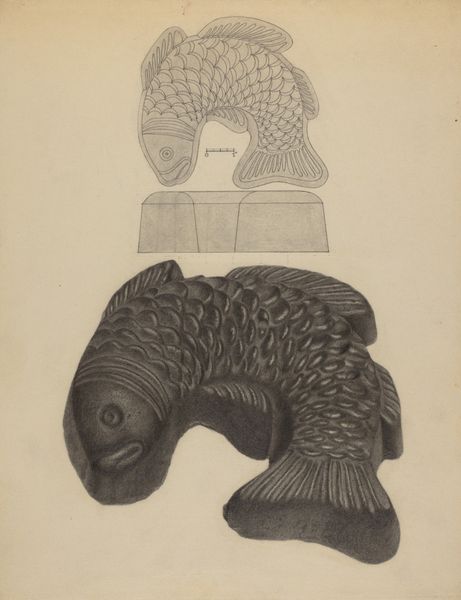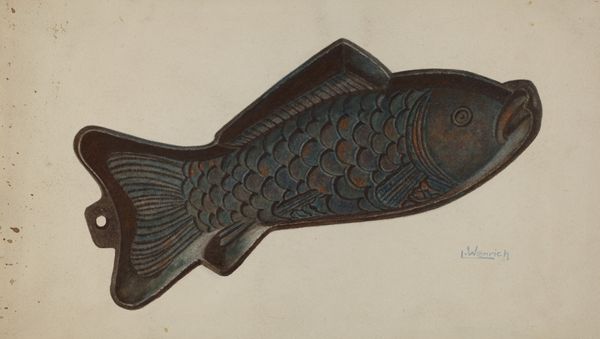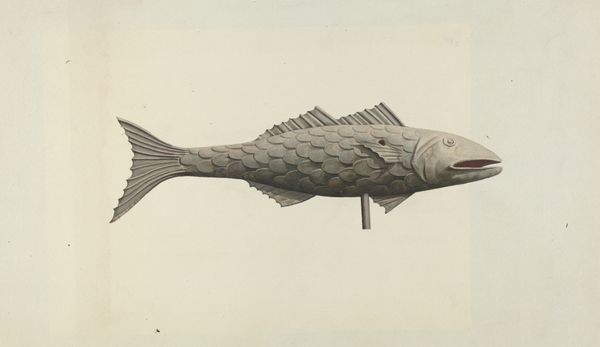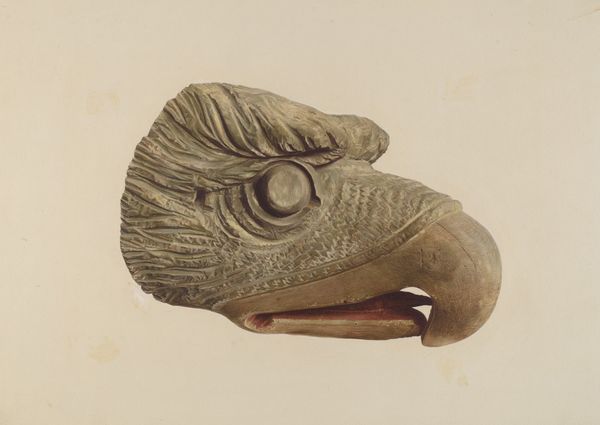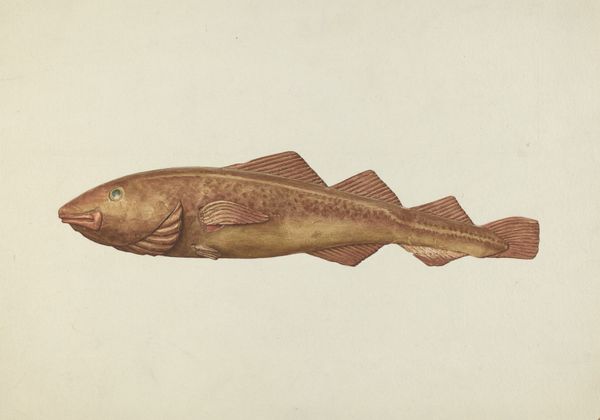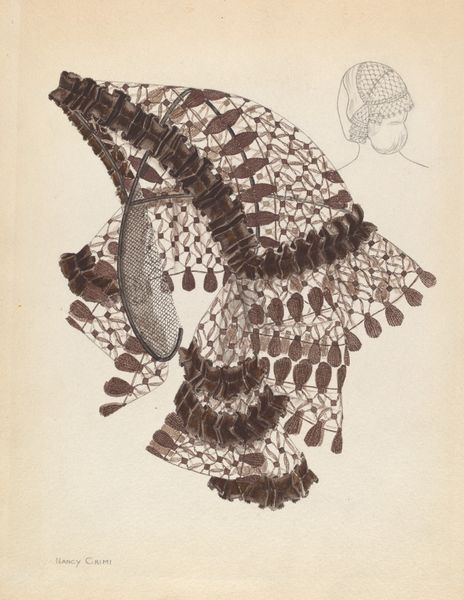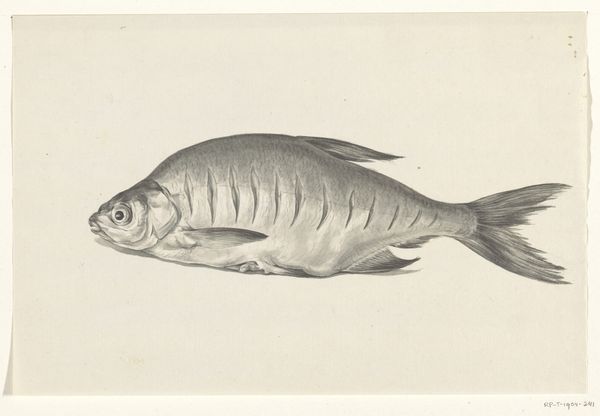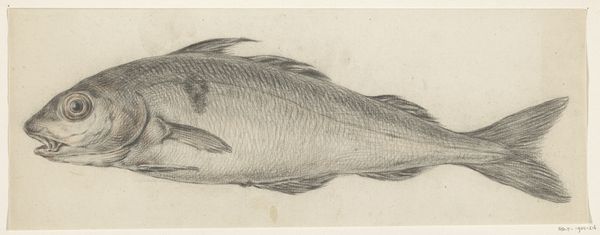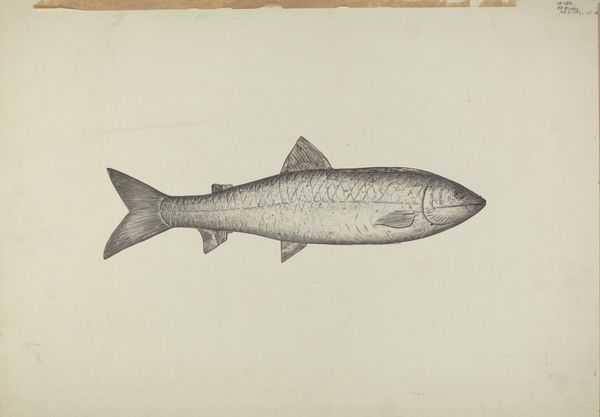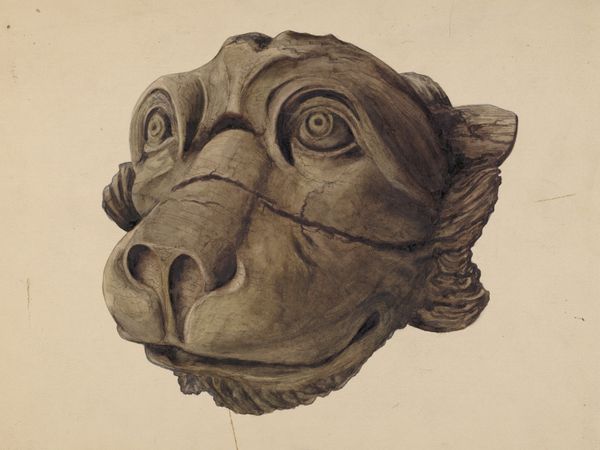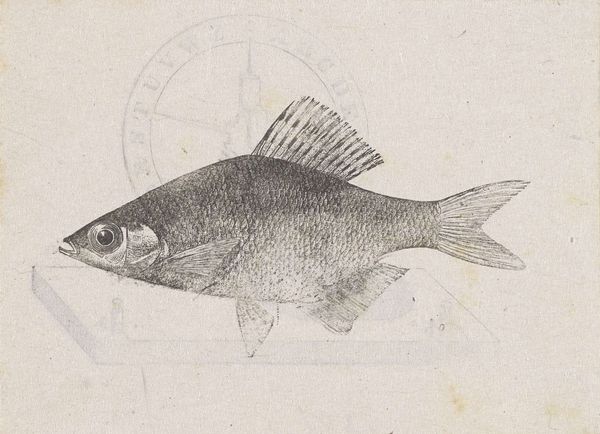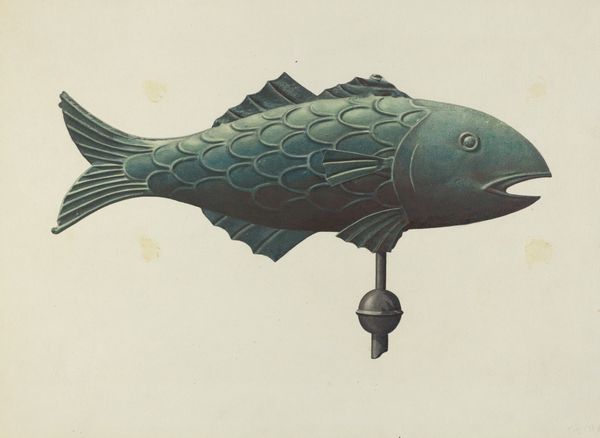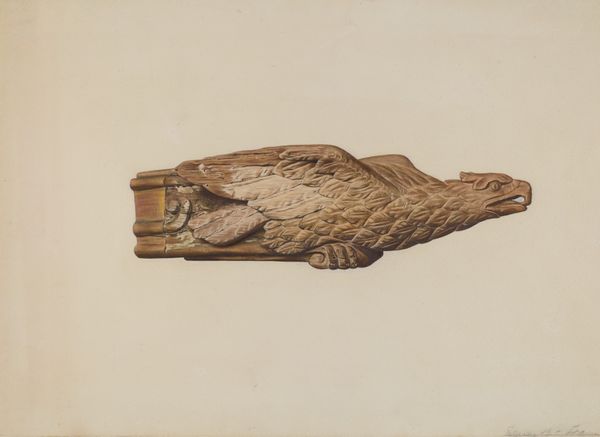
found-object, sculpture
#
found-object
#
geometric
#
sculpture
Dimensions: overall: 21 x 17.9 cm (8 1/4 x 7 1/16 in.)
Copyright: National Gallery of Art: CC0 1.0
This curious fish-shaped form, an aspic mold, was made by Philip Johnson, though we don't know exactly when. Think about it: this is a tool for haute cuisine, used to cast savory jellies. But it's made from humble cast iron, an industrial material. The mold's form, with its scales and fins, elevates the aspic beyond mere sustenance. It speaks to a social context where even everyday food preparation could be considered an art. Cast iron production itself depended on skilled labor in foundries, and its availability reflects the growth of industrial capitalism. The mold embodies an aesthetic appreciation of culinary presentation, raising questions about the labor involved in both its manufacture and its culinary use. Johnson's choice of material connects the refined world of dining with the gritty realities of production. Considering the history embedded in this object challenges our notions of fine art versus craft, and how the most ordinary things can embody rich cultural significance.
Comments
No comments
Be the first to comment and join the conversation on the ultimate creative platform.
